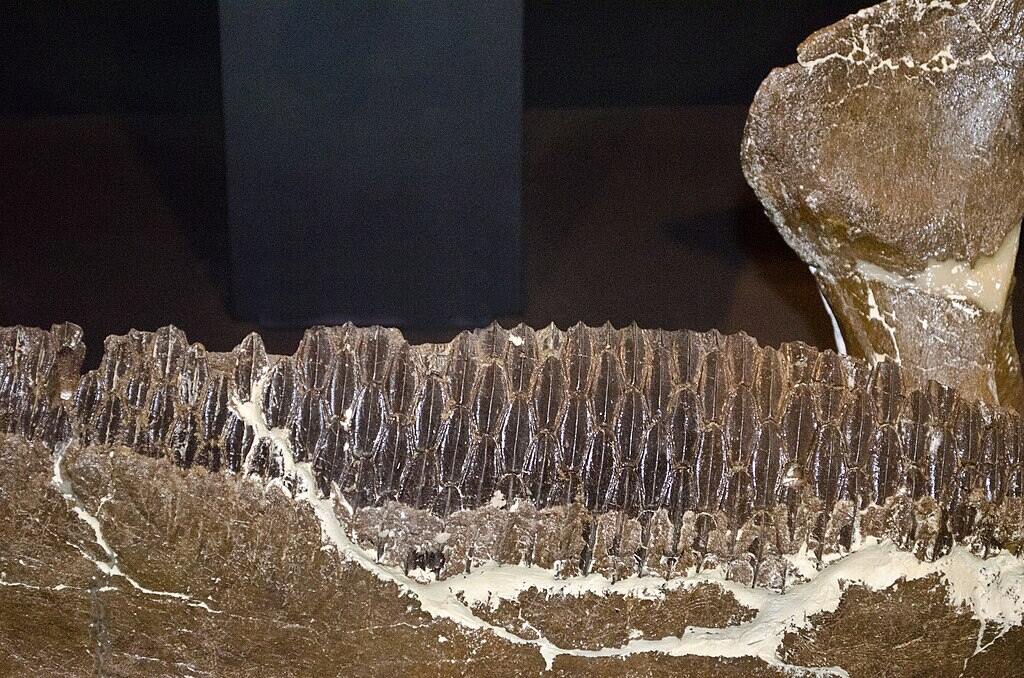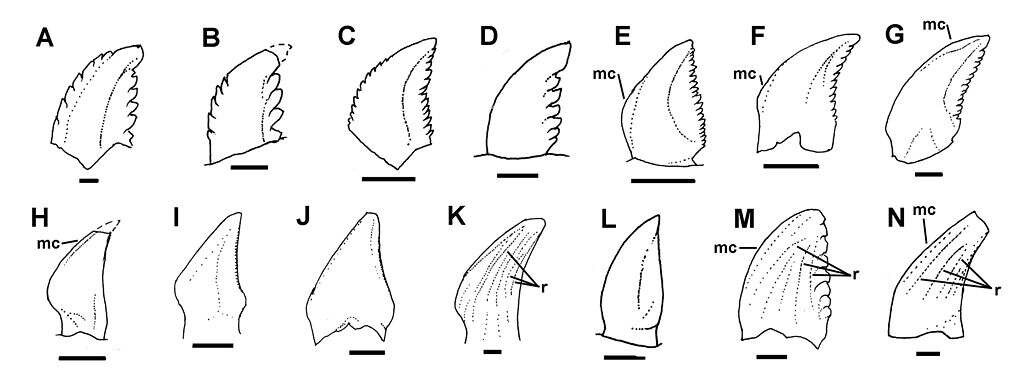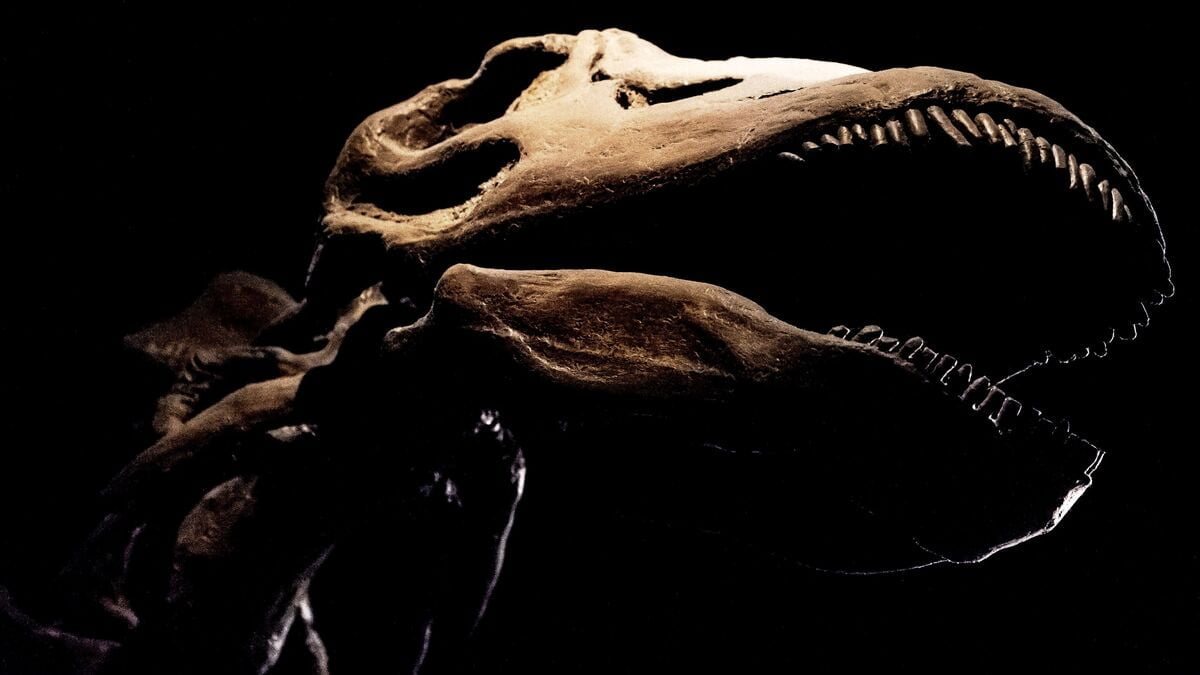You may have gone online to shop for dinosaur fossils. Have you ever wondered why dinosaur teeth, in particular, seem to be so readily available and affordable?
Many sites offer teeth from famous dinosaurs such as Carcharodontosaurus or Spinosaurus. Yet, they are often priced lower than the jewelry you’re wearing right now.
Why are dinosaur teeth so cheap? It comes down to two main factors: dinosaur teeth are commonly found, and provide less scientific value when compared to other fossils.
Still not satisfied? These are great questions and we get into the weeds here to provide. Let’s get started.
Dinosaur Teeth Were Durable
Why are dinosaur teeth more common than other bones? This comes down to two reasons: durability and volume.
Fossilization turns bones into stone. Minerals such as calcium in bones are reinforced by other minerals in sediments. This produces a fossil, which is distinct from a buried bone.
If you’re interested in learning more about how this works, read this article by howstuffworks.com after you’re done here.
When a dinosaur died, its body underwent decomposition, a natural process where organic tissues break down. Teeth, being dense and mineralized, are less prone to decay compared to softer tissues.
As the surrounding organic matter decomposes, the teeth become isolated and exposed. Teeth are primarily composed of the hardest substances found in the animal kingdom: dentin and enamel.
Dentin, a calcified tissue, forms the bulk of the tooth, providing it with strength and resilience. Enamel, the outermost layer, adds an additional layer of protection with its mineralized structure. This inherent toughness makes teeth well-equipped to withstand the rigors of the fossilization process.
Dinosaurs Were Widespread
You may assume that dinosaurs were rare and that finding any trace of them is akin to finding gold. While complete skeletons are rare, teeth are plentiful.
Contrary to popular belief, dinosaurs weren’t as rare as we think. While complete skeletons are a rarity, their teeth are found in abundance.
Dinosaurs were widespread, but some were rarer than others. Take Tyrannosaurs for instance.
Tyrannosaurus, despite being the most famous dinosaur of all, was much rarer than herbivores. The population dynamics of ecosystems consist of numerous prey species for every single predator in an environment.
This means that herbivore teeth are more common and sometimes less attractive to collectors. Dinosaurs such as the hadrosaurs, also known as duck-billed dinosaurs, make great candidates for starting your tooth collection.
Check out this jaw from the hadrosaur Edmontosaurus below. Take note of the various rows of grinding teeth. Can you guess why it had so many teeth?

We know that dinosaurs existed on every continent and often traveled in large groups. Large migrations of dinosaurs, such as this Edmontosaurus, chewed through the landscape leaving worn teeth behind.
On top of this, dinosaurs existed on Earth for more than 170 million years! This created an enormous stockpile of teeth to fossilize.
Dinosaurs Shed Teeth Over Their Lifetime
Why are dinosaur teeth common? Dinosaurs often went through thousands of teeth throughout a lifetime, just like some modern animals.
Like many reptiles, dinosaurs were polyphyodonts. This means they could continually replace their teeth.
This dental adaptation allowed them to maintain functional and efficient dentition despite the wear and tear associated with their daily activities such as feeding and hunting. As a dinosaur’s teeth wore down or became damaged, the process of shedding and replacing them ensured a continuous supply of functional teeth.
Want to learn more about teeth than you ever did at the dentist? Read this guide by Berkley. It includes many great diagrams.
Unlike mammals, which typically have two sets of teeth, deciduous and permanent, dinosaurs had a cyclical and gradual tooth replacement mechanism that occurred throughout their lives.

The image above showcases various teeth from some theropod dinosaurs, the carnivorous ones. You can go to qilong.wordpress.com to see a full breakdown and match each tooth to its proposed genus.
The Supply and Demand of Fossil Teeth
The market dynamics surrounding dinosaur teeth are deeply rooted, pun intended, in the principles of supply and demand. The abundance of teeth, coupled with the varying quality of these fossils, creates a scenario where collectors and buyers can choose from a range of specimens.
Not all dinosaur teeth are created equal. The quality of a fossilized tooth depends on various factors, including the type of dinosaur, the conditions of preservation, and the geological processes it underwent. Some teeth are pristine, while others may be cracked, eroded, or otherwise imperfect.
Our article on why fossils are found in sedimentary rock covers the process that dinosaur teeth underwent. Even the toughest bones faced an uphill battle.
Collectors often seek well-preserved specimens, and imperfect teeth are less desirable in the market. The lower quality of many dinosaur teeth contributes to their lower price tag. It’s a classic case of supply and demand.
Some dinosaurs will naturally demand a higher price tag. Which ones? Well, the ones the average person has heard of before.
Check out this T. rex tooth that sold for more than $56,000!
Tyrannosaurs, spinosaurs, and dromeosaurs, better known as raptors, tend to get the most attention from collectors. The massive shark Otodus megalodon has a large demand as well.
If you’re happy to just touch a piece of history, fragmented dinosaur teeth make a great option. You don’t necessarily need a prized showpiece for a collection when more affordable options exist.
This abundance makes dinosaur teeth more affordable than rarer and more sought-after fossilized remains. In essence, the accessibility of dinosaur teeth in the market is a direct result of their commonality in the fossil record. We have these factors to thank when seeking out a fossil for the collection.
Common Dinosaur Teeth Provide Limited Scientific Value
While a complete dinosaur skeleton can offer valuable insights into the biology and behavior of the species, individual teeth provide limited scientific value. Paleontologists are keen on studying entire skeletons to understand the anatomy, movement, and ecological role of dinosaurs.
I know what you’re thinking: don’t all fossils provide valuable information? While every fossil is unique, the more common they are the less they can tell us that we don’t already know.
Isolated teeth, while interesting, offer fewer clues about the overall physiology and behavior of the creatures. Many times a single tooth can’t even be linked to a specific type of dinosaur and is only assigned to a generic classification as you can learn in the video below.
This lower scientific significance impacts the demand for dinosaur teeth among researchers and institutions. Consequently, the market for these fossils is primarily driven by collectors, enthusiasts, and those seeking unique pieces of natural history rather than scientific institutions.
Why Are Dinosaur Teeth So Cheap and Should I Buy Them?
Dinosaur teeth are common and sought-after fossils. This leads to an avid market of sellers.
While not all dinosaur teeth can be considered cheap, a great number of them are available for sale for modest prices. We’ve discussed exactly why this might be the case.
Teeth provide only limited value to the scientific community. As such, there are rarely any moral gray areas when purchasing teeth legally. It’s the same as buying trilobites or ammonites. In another article, we cover the topic of selling fossils and the ethical dilemma this may create.
In short, the accessibility of dinosaur teeth in the market is a direct result of their commonality in the fossil record. If you can find a real one at a decent price, go for it!
If you learned something, please help us out by sharing this post. If you’ve got some interesting fossil teeth in your collection, leave us a comment to let us know.

